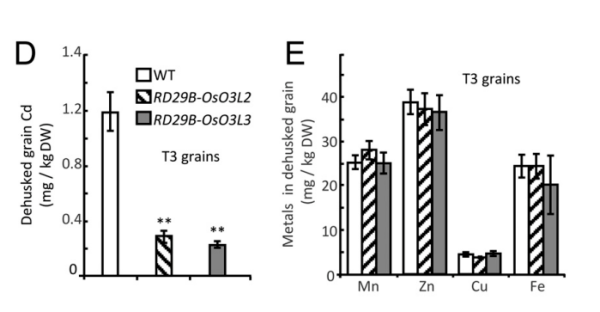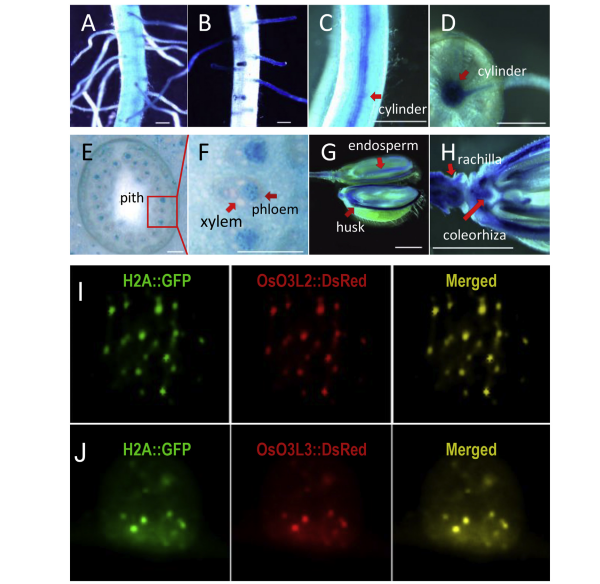Engineering low-cadmium rice through expression of OXS3-family member genes
Exposure to cadmium (Cd), a toxic heavy metal classified as a group 1 carcinogen can lead to cancer, osteoporosis and renal disorder.
Contamination of soil with Cd results in human dietary intake from plant-derived food, with rice as the major source of dietary Cd for nearly half of the world’s population that relies on it as a staple.
To reduce the risk of Cd toxicity to human, Dr. David W. Ow and his team have made a lot of effort on the research about creating new rice cultivars that can substantially reduce the Cd content in the rice grain. In 2016, they discovered that overexpression of truncated gene fragments derived from the rice genes OsO3L2 and OsO3L3 could reduce Cd accumulation in transgenic rice.
However, in the former study, the full length genes of due OsO3L2 and OsO3L3 were not tested due to the prior work in Arabidopsis where overexpression of these genes caused seedling lethality.
Although the fragments of OsO3L2 and OsO3L3 were functioning in the same way as the full length proteins, the other possibilities could not be ruled out, i.e. that a new function was exhibited by fragments of OsO3L2 and OsO3L3 as a result of the truncation.
Therefore, in the recent study, they tried to overexpress full length OsO3L2 and OsO3L3 through the use of the stress- inducible promoter RD29B to see if the same effect could be achieved.
The results demonstrated that the T2 homozygotes from the lines of OsO3L2 and OsO3L3 had an effect on reducing accumulation of Cd in root and shoot as well as in T3 grain, similar to the previous results when the truncated gene fragments were used (Fig.1).
Importantly, the concentrations of essential metals copper (Cu), iron (Fe), manganese (Mn) and zinc (Zn) in grains were unaffected. Analysis of the expression profile suggested that low Cd accumulation may be due to high expression of OsO3L2 and OsO3L3 in the root tip region (Fig.2).
Cellular localization of OsO3L2 and OsO3L3 indicate that they are histone H2A interacting nuclear proteins in vascular cells and especially in the root tip region. It is possible that interaction with histone H2A modifies chromatin to regulate downstream genes expression.
This study has been finished by Dr. WANG Changhu (First author), Dr. David W. Ow (corresponding author) and their colleagues from South China Botanical Garden of Chinese Academy of Sciences, and has been published in New Biotechnology, entitled Engineering low-cadmium rice through stress-inducible expression of OXS3-family member genes (https://www.sciencedirect.com/science/article/pii/S1871678417305198).

Figure 1. Transgenic lines and their metal content.

Figure 2. Cellular localization OsO3L2 and OsO3L3.
File Download: